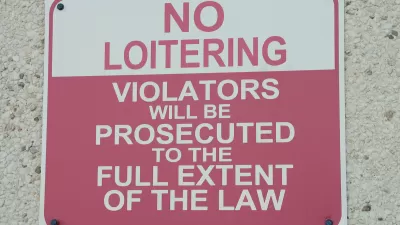Unlike most U.S. communities, Milwaukee County has managed to make significant progress toward assisting unhoused residents through a Housing First approach.

For the last decade, Milwaukee County has been bucking a national trend, effectively reducing the number of homeless residents and assisting people with supportive services.
In a piece for Governing, Carl Smith explains how the county’s Housing First approach helped it reduce unsheltered homelessness by 92 percent in the program’s first five years. “By the 2021 HUD count, the county had the nation’s lowest per-capita unsheltered homeless population. Savings to behavioral health and criminal justice systems are also tracked; to date Milwaukee County's Housing First program has saved taxpayers more than $30 million,” Smith adds.
When housing became harder to find in 2023, the city hired a landlord engagement coordinator to incentivize property owners and identify vacancies. Assistance programs also depend heavily on local collaboration. For example, the Milwaukee Downtown business improvement district (BID) funds a homeless outreach coordinator position and two public service ambassadors.
FULL STORY: Year After Year, Milwaukee Manages to Reduce Homelessness

Planetizen Federal Action Tracker
A weekly monitor of how Trump’s orders and actions are impacting planners and planning in America.

Map: Where Senate Republicans Want to Sell Your Public Lands
For public land advocates, the Senate Republicans’ proposal to sell millions of acres of public land in the West is “the biggest fight of their careers.”

Restaurant Patios Were a Pandemic Win — Why Were They so Hard to Keep?
Social distancing requirements and changes in travel patterns prompted cities to pilot new uses for street and sidewalk space. Then it got complicated.

Platform Pilsner: Vancouver Transit Agency Releases... a Beer?
TransLink will receive a portion of every sale of the four-pack.

Toronto Weighs Cheaper Transit, Parking Hikes for Major Events
Special event rates would take effect during large festivals, sports games and concerts to ‘discourage driving, manage congestion and free up space for transit.”

Berlin to Consider Car-Free Zone Larger Than Manhattan
The area bound by the 22-mile Ringbahn would still allow 12 uses of a private automobile per year per person, and several other exemptions.
Urban Design for Planners 1: Software Tools
This six-course series explores essential urban design concepts using open source software and equips planners with the tools they need to participate fully in the urban design process.
Planning for Universal Design
Learn the tools for implementing Universal Design in planning regulations.
Heyer Gruel & Associates PA
JM Goldson LLC
Custer County Colorado
City of Camden Redevelopment Agency
City of Astoria
Transportation Research & Education Center (TREC) at Portland State University
Camden Redevelopment Agency
City of Claremont
Municipality of Princeton (NJ)





























